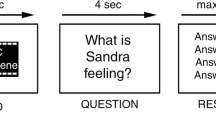Abstract
Ketamine is an N-methyl-D-aspartate (NMDA) receptor antagonist with prominent psychoactive effects in humans. This study evaluated whether the oral administration of haloperidol 5 mg would block the effects of an intravenous ketamine infusion (bolus of 0.26 mg/kg followed by 0.65 mg/kg per hour). Twenty healthy subjects completed 4 test days involving the oral administration of haloperidol or matched placebo 2 h prior to the intravenous infusion of ketamine or saline. Ketamine produced cognitive, behavioral, neuroendocrine, and physiologic effects in the healthy subjects that were similar to previous reports. Haloperidol pretreatment reduced impairments in executive cognitive functions produced by ketamine as measured by proverb interpretations and the Wisconsin Card Sorting Test. However, it failed to block the capacity of ketamine to produce psychosis, perceptual changes, negative symptoms, or euphoria in healthy subjects. These data outline an important, but functionally delineaeted modulation of ketamine effects by dopamine2 receptors and other sites of haloperidol action.
Similar content being viewed by others
Author information
Authors and Affiliations
Additional information
Received: 10 November 1998/Final version: 23 February 1999
Rights and permissions
About this article
Cite this article
Krystal, J., D’Souza, D., Karper, L. et al. Interactive effects of subanesthetic ketamine and haloperidol in healthy humans. Psychopharmacology 145, 193–204 (1999). https://doi.org/10.1007/s002130051049
Issue Date:
DOI: https://doi.org/10.1007/s002130051049




